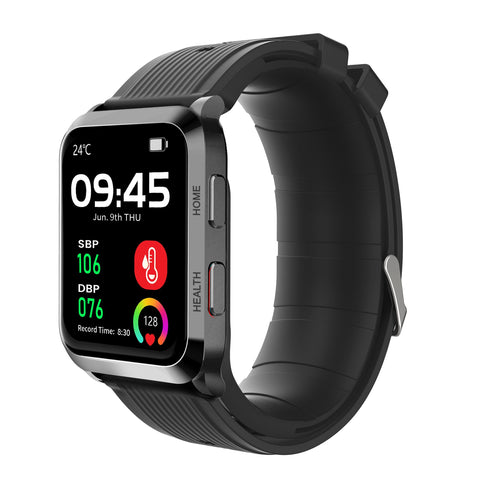Health smart watch
The oxygen needed for our metabolism enters the body through the respiratory system, combines with the hemoglobin in the red blood cells to form oxyhemoglobin, and then transports it to the cells of various parts of the human body.
Therefore, blood hemoglobin is the key to accurately detect blood oxygen saturation. On the other hand, the level of oxygen contained in hemoglobin affects the absorption of red and infrared light by the blood. Specifically, oxygen-saturated hemoglobin absorbs more infrared light, and oxygen-free hemoglobin absorbs more red light.
Usually, smart wearable devices such as smart bracelets or watches use photoelectric sensors to perform optical measurements based on the principle that the amount of light absorbed by arterial blood changes with the pulse of the arteries.
There are two light-emitting tubes installed in the sports watch, which emit red light and infrared light respectively, and a photodetector is installed to convert the detected red light and infrared light through the arterial blood vessels into electrical signals to obtain a set of data.
Based on this data, using a background algorithm, the sports watch is able to calculate an estimate of the user's blood oxygen saturation.
It can also be seen from this that the calculated result is not an absolutely accurate value, but an estimated value. So will this value lose its guiding significance?
According to the medical definition, under normal circumstances, the oxygen saturation of human arterial blood is about 95%-100%, and the oxygen saturation of venous blood is about 75%. Generally, arterial blood oxygen less than 94% is insufficient oxygen supply, and less than 90% can be defined as hypoxemia.
Because blood oxygen saturation is evaluated based on interval values, blood oxygen saturation detected by wearable devices such as sports watches can still help people effectively judge their physical condition.
For example, when mountaineering at an altitude of 3000 meters or more, if the heart rate does not exceed 100, it is normal for the blood oxygen saturation to be greater than 90%; between 80% and 90% is mild hypoxia, and activities should be reduced. , Proper rest; between 70%-80% is moderate hypoxia, appropriate amount of oxygen should be inhaled, and anti-hypoxia drugs should be taken; less than 70% is severe hypoxia, all activities should be stopped, and medical treatment should be timely.








